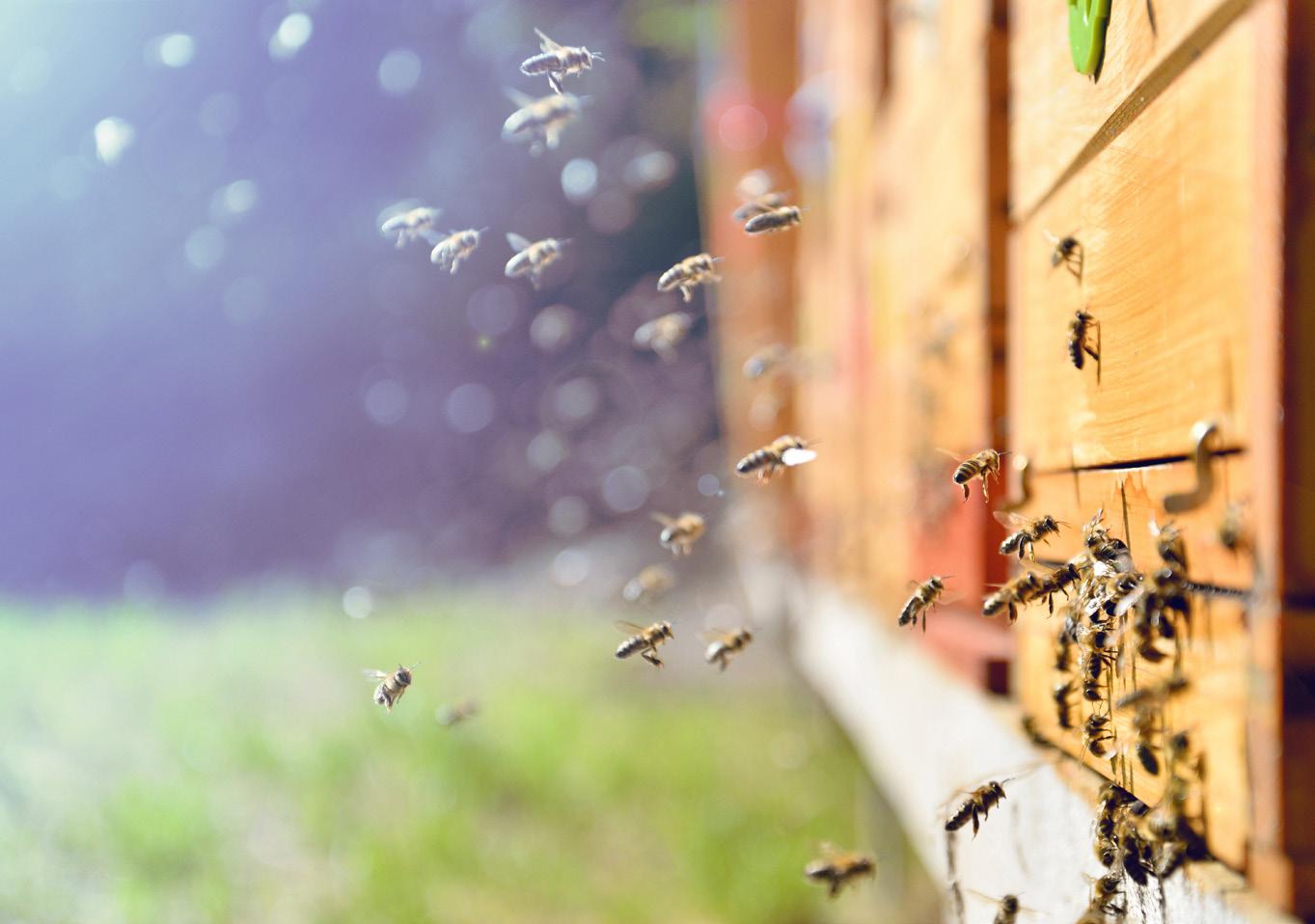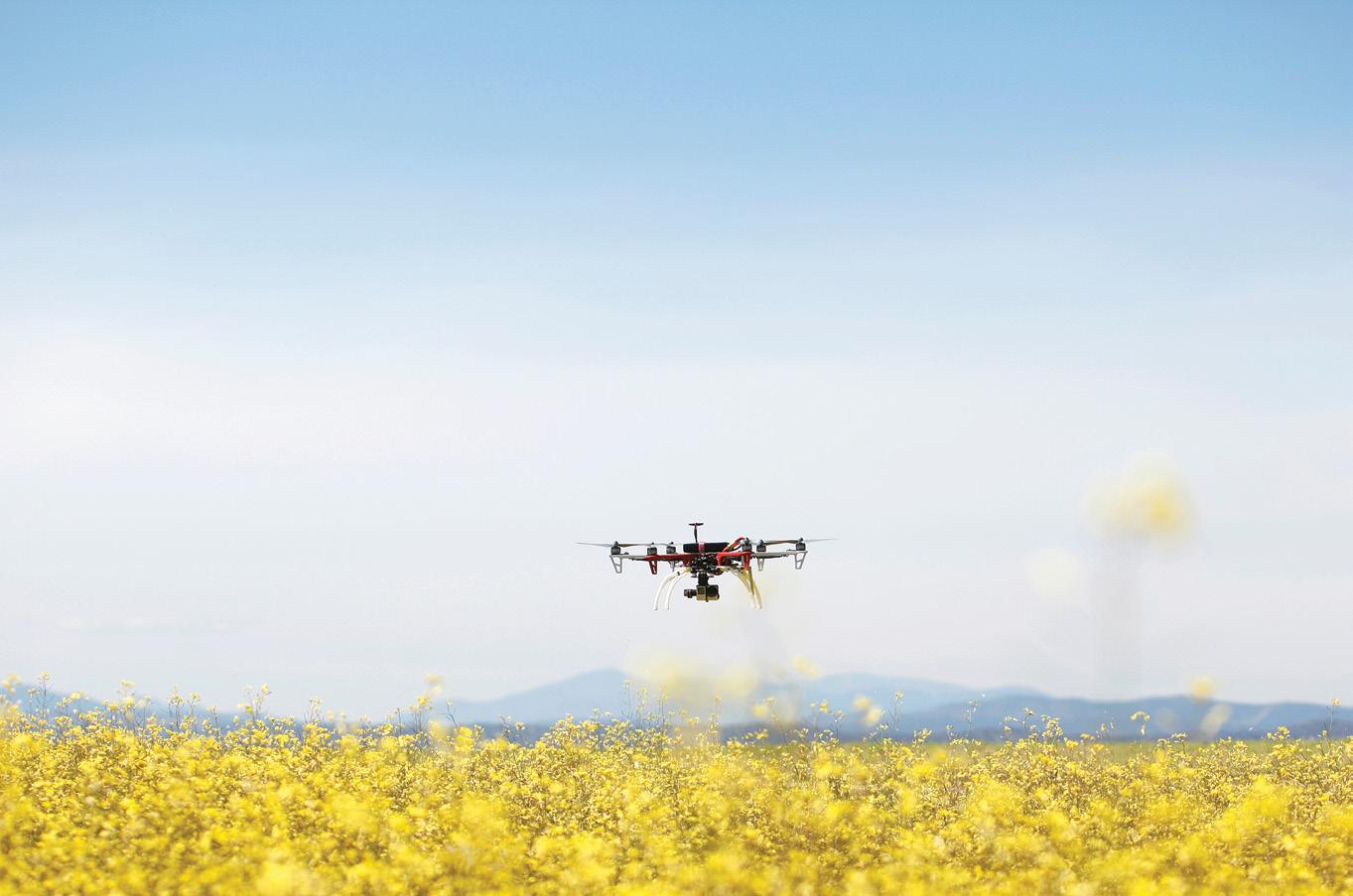
5 minute read
WHY SHOULD WE FIGHT TO SAVE THE BEES?
Bees are responsible for pollinating one sixth of all flowering plants on Planet Earth and they help produce around €529 billion in crops (35 per cent of global food production), according to EarthDay.org. However, they are declining at an alarming rate, with some regions losing up to 90 per cent of their bee populations.
WORDS MARISA CUTILLAS
Between October 2018 and April 2019, around 37.7 per cent of the managed (beekeper-owned) population was lost, which is seven per cent more than in the previous winter. As noted by the Environmental Protection Agency, the number of hives that survive the coldest months are an indicator of overall bee health. We are doing something wrong and if we don’t fix it, we will be living in a less biodiverse and infinitely poorer world; one in which many of the foods we enjoy daily become a luxury to be relished by a very small percentage of people.

WHAT PLANTS DO BEES POLLINATE?
To obtain a good idea of how important bees are, it is worth mentioning just a few items of produce that rely on pollination. The list includes honey, fruits from trees (think apples, lemons, apricots, and peaches), berries (raspberries, strawberries, blackberries and more), avocados, almonds, onions, tea plants, beans, tomatoes, grapes, cauliflower, beetroot, the cocoa bean, sugarcane, coffee, and more. As stated by The Pollinator Partnership, “Worldwide, approximately 1,000 plants grown for food, beverages, fibres, spices, and medicines need to be pollinated in order to produce the goods on which we depend.” If bee populations dwindle, food prices will skyrocket – something that already beleaguered populations will not be able to sustain.

WHAT IS CAUSING BEES TO DIE?
Some of the biggest culprits when it comes to bee health are global warming, pesticides, and pollution. In the first decade of the new millennium, the term ‘Colony Collapse Disorder’ was coined after the drastic disappearance of bees worldwide.
Loss of habitat (thanks to construction and poor management practices) are the final straw on the already-fragile proverbial camel’s back. Another big problem is the Varroa mite – a female mite that invades a honey bee brood, laying eggs on honey bee larva prior to the pupation stage, before bees cover their cell in a protective wax covering. When the mite eggs hatch, they begin to feed on bee larvae. The bees are weakened but still able to chew their way through their protective wax layer.
When this occurs, the mites leave the cell and the whole cycle begins again. The mite is somehow ‘intelligent’, only laying its eggs on larvae that will turn into drones (the bees that mate with the queen). Hive experts note that when the mite targets the larvae of the numerous group of worker bees, they commit suicide to stop the mite from reproducing. When only the drones are infected, the queen and swarm of healthy workers abandon their hive to give the colonies a fresh start, leaving the breeding drones behind.
WORKING TO REVERSE THE TREND

Some countries are when the government taking the problem of decided to follow declining bee populations beekeeper’ instincts seriously. Others that this pesticide are not giving it the was responsible for tremendous importance bee mortality. This it has. For instance, experiment resulted in the United States far fewer bee deaths recently suspended and paved the way for data collection for its the EU-wide ban on the Honey Bee Colonies use of three types of survey just weeks after neonicotinoids on field discovering that 40 per crops (not on plants in cent of managed bee greenhouses). “Slovenia colonies in the country was very active, as were had been lost. However, the French beekeepers, other countries (like in bringing (the danger Slovenia) are showing of neonicotinoids) to how, with hard work everyone’s attention,” and commitment, bee says Jeff Petis, the populations can actually president of Apimondia, flourish. Recently, the the International Slovenian Beekeepers Federation of Beekeepers’ Association reported a Associations. 57 per cent increase in beehive numbers. Slovenia was the first country to ban neonicotinoid pesticides
The European Food Safety Authority guidance on how to assess the risks of pesticides for bees played an important role in the neonicotinoid ban, but some countries failed to adopt it. The guide is being revised by an EFSA scientific working group with the aid of a stakeholder consultative group. The new guidance will most probably be adopted in 2021.
In the Netherlands, beekeepers are looking for ways (including genome sequencing) to breed varroa-resistant bees. As Science magazine's Erik Stokstad reports, “Since the varroa mite jumped from Asian honey bees (Apis cerana) to the common domesticated European honey bee (A. mellifera) more than a half-century ago, researchers have discovered some bees can keep the mite in check through behaviors such as fastidious grooming and removing mite-infested larvae.”
New tests are allowing lab scientists to identify the bees that carry genes for these protective behaviours. On an individual scale, we can all do our share by buying organic food, using organic insecticides like neem and salt spray on our home plants, and planting gardens with species bees love (such as hyacinth, lilac, and calendula). You can also build a small bee bath in your garden with clean water and pebbles, so the bees can land on your bath and have a drink. If you see a bee that looks dehydrated, feeding it a little sugar and water can give it a second kick.
ARE THERE ALTERNATIVES TO BEE POLLINATION?
Although life (and food) as we know it would be unthinkable, there are a few initiatives being taken to pollinate plants without bees. These include mechanical pollination, pollination by hand, and the new RoboBee prototype created by researchers from the National Institute of Advanced Industrial Science and Technology in Japan. This ‘bee robot’ uses a drone to pick pollen up from one plant and cross-pollinate others. It is quite genius yet still no match for bees!










